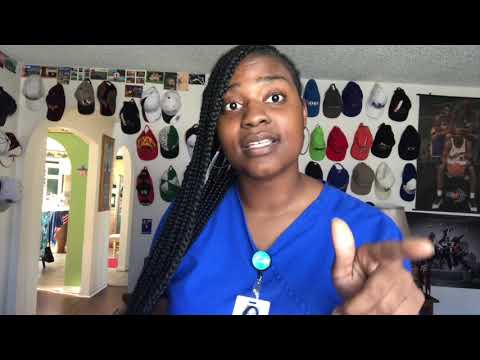How to Become a Medical Lab Assistant
Contents [show]
This job is perfect for those who want to enter the medical field without completing a long and expensive education. It is a good way to get your “foot in the door” of the medical field.
Checkout this video:
What is a medical lab assistant?
A medical lab assistant is a person whoperforming routine technical support in a clinical laboratory. Individuals in this role typically work under the supervision of a licensed medical technologist or other health professional. Duties may include such tasks as collecting and preparing specimens for testing, performing basic tests, and maintaining lab equipment. Many medical lab assistants have formal training from an accredited program, although some may be able to learn on the job.
Duties of a medical lab assistant
Medical lab assistants (MLAs) perform a variety of duties in support of medical laboratory technologists (MLTs), pathologists, and other health care professionals. They may collect and process blood, urine, and tissues samples from patients. MLAs may also prepare specimen slides for examination under a microscope, conduct routine diagnostic tests, maintain laboratory equipment, and keep accurate records.
Education and training requirements
Medical lab assistants are trained on the job and typically need a high school diploma. Some employers may prefer or require candidates to have completed a postsecondary education program in medical laboratory technology.
Candidates for positions as medical lab assistants must be able to perform tasks that require:
-Accuracy
-Attention to detail
-manual dexterity
-The ability to follow instructions
Skills and qualities required
To become a medical lab assistant you will need to have good communication and interpersonal skills. You will also need to be detail-oriented and able to work well under pressure. In addition, it is important that you are able to follow instructions carefully and accurately.
Salary and job outlook
Most medical lab assistants earn between $30,000 and $40,000 per year, although salaries will vary depending on experience, qualifications and employer. Job prospects for medical lab assistants are good, with the demand for these professionals expected to grow in line with the overall healthcare sector.
How to become a medical lab assistant
Medical lab assistants (MLAs) work under the supervision of medical laboratory technologists (MLTs) and other health professionals to collect and prepare samples for testing. They also perform basic tests and record results.
In order to become an MLA, you will need to complete a medical laboratory assistant program at a college, university, or technical institute. These programs typically take one to two years to complete and include both classroom and clinical components.
Once you have completed your training, you will need to obtain certification from the Canadian Medical laboratory assistants Certification Board (CMLACB). In order to be eligible for certification, you must have graduated from an accredited MLA program and meet the experience requirements set out by the CMLACB.
After you have been certified, you will need to keep your skills up-to-date by taking continuing education courses. MLAs who wish to further their career may choose to pursue additional training in order to become an MLT.
Certification and professional organizations
Medical lab assistants (MLAs) are an important part of the healthcare team. They perform a variety of tasks in the lab, such as collecting and processing blood and tissue samples, performing EKGs, and operating X-ray machines.
In order to become an MLA, you will need to complete a medical lab assistant program at a community college or vocational school. Upon completion of the program, you will be eligible to take the certified medical lab assistant (CMLA) exam administered by the American Society for Clinical Pathology (ASCP).
In addition to certification, you may also want to consider joining a professional organization such as the American Medical Technologists (AMT) or the National Healthcare Association (NHA). These organizations offer continuing education opportunities and networking events that can help you further your career.
Job resources
The job outlook for medical lab assistants is positive, with a projected 23% growth in positions from 2016 to 2026.* That’s much faster than the average for all occupations, which is just 7%.* As the baby-boomer population ages, there will be an increasing need for diagnostic testing, which medical lab assistants perform.
There are a number of resources you can use to find open positions as a medical lab assistant. The first step is to research the companies in your area that are in need of this type of worker. You can do this by visiting the websites of companies that offer medical services and looking for job postings. You can also search job boards such as Indeed or Craigslist.
Another way to find open positions is to contact your local community college or technical school and inquire about their medical lab assistant training program. Many of these schools have relationships with hospitals and other healthcare facilities who hire their graduates.
*Job Outlook data from the Bureau of Labor Statistics
References
In order to become a medical lab assistant, you will need to have a high school diploma or GED. You will also need to complete a postsecondary education program and pass a certification exam. To get started, you can check out our references below.
-Medical Laboratory Assisting, 4th edition by Joanna Mоrgan
-CMLA’s Medical Laboratory Assistant (MLA) Certification Study Guide
-AAMA – medical assisting Education Review Board (MAERB)
Further reading
If you’re interested in becoming a medical lab assistant, there are a few things you should know. First, it’s important to have a strong background in science and math. You should also be comfortable working with computers and other technology. Finally, it’s helpful to have good communication skills.
There are a few different ways to become a medical lab assistant. One way is to complete an accredited training program. This typically takes about one year to complete. Alternatively, you can pursue a two-year degree in medical laboratory science. Once you’ve completed your training or degree, you’ll need to pass a certification exam in order to become certified.
If you’re interested in further reading on this topic, we’ve compiled a list of helpful resources below.







